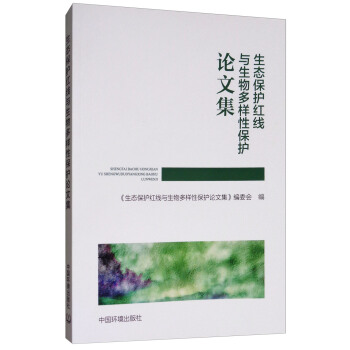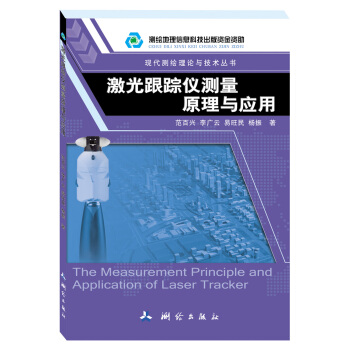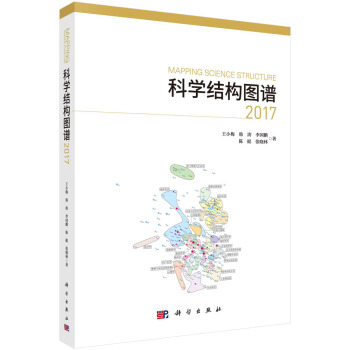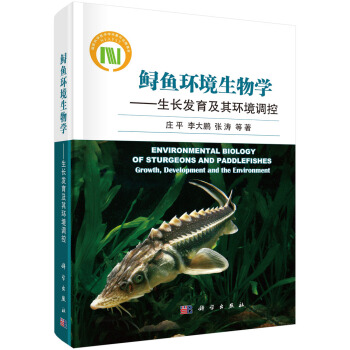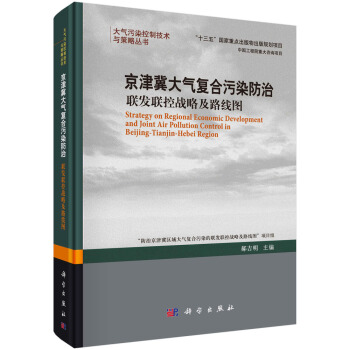![自守函数理论讲义 第二卷 [Lectures on the Theory of Theory of Automorphic Functions,Second Volume]](https://pic.tinynews.org/12244746/5a501e58Nb843df02.jpg)

具体描述
内容简介
Felix Klein著名的Erlangen纲领使得群作用理论成为数学的核心部分。在此纲领的精神下,Felix Klein开始一个伟大的计划,就是撰写一系列著作将数学各领域包括数论、几何、复分析、离散子群等统一起来。他的一本著作是《二十面体和十五次方程的解》于1884年出版,4年后翻译成英文版,它将三个看似不同的领域——二十面体的对称性、十五次方程的解和超几何函数的微分方程紧密地联系起来。之后Felix Klein和Robert Fricke合作撰写了四卷著作,包括椭圆模函数两卷本和自守函数两卷本。弗里克、克莱因著季理真主编迪普雷译的《自守函数理论讲义(第2卷)(英文版)(精)》是对一本著作的推广,内容包含Poincare和Klein在自守形式的高度原创性的工作,它们奠定了Lie群的离散子群、代数群的算术子群及自守形式的现代理论的基础,对数学的发展起着巨大的推动作用。内页插图
目录
PrefacePart I Narrower theory of the single-valued automorphic functions of one variable
Concept, existence and fundamental properties of the automorphic functions
1.1 Definition of the automorphic functions
1.2 Production of an elementary potential of the second kind belonging
to the fundamental domain
1.3 Production of automorphic functions of the group F
1.4 Mapping of the fundamental domain P onto a closed Riemann surface
1.5 The totality of all automorphic functions belonging to a group F and their principal properties
1.6 Classification and closer study of the elementary automorphic functions
1.7 Preparations for the classification of the higher automorphic functions
1.8 Classification and closer study of the higher automorphic functions ...
1.9 The integrals of the automorphic models
1.10 General single-valuedness theorem. Application to linear differential equations
1.11 as a linearly polymorphic function. The fundamental problem
1.12 Differential equations of the third order for the polymorphic functions.
1.13 Generalization of the concept of automorphic functions
Form-theoretic discussions for the automorphic models of genus zero
2.1 Shapes of the fundamental domains for the models of genus zero
2.2 Recapitulation of homogeneous variables, substitutions and groups...
2.3 General definition of the automorphic forms
2.4 The differentiation process and the principal forms of the models of genus zero
2.5 The family of prime forms and the ground forms for automorphic models with p = 0
2.6 Behavior of the automorphic forms q0d ((1,(2) with respect to the group generators
2.7 The ground forms for the groups of the circular-arc triangles
2.8 The single-valued automorphic forms and their multiplicator systems .
2.9 The number of all mtflfiplicator systems M for a given group F
2.10 Example for the determination of the number of the multiplicator systems M, the effect of secondary relations
2.11 Representation of all unbranched automorphic forms
2.12 Existence theorem for single-valued forms q0d((1,(2) for given multiplicator system M
2.13 Relations between multiplicator systems inverse to one another.
2.14 Integral forms and forms with prescribed poles
2.15 The (1, (2 as linearly-polymorphic forms of the zl, z2
2.16 Other forms of the polymorphic forms. History
2.17 Differential equations of second order for the polymorphic forms of zero dimension
2.18 Invariant form of the differential equation for the polymorphic forms (1, (2
2.19 Series representation of the polymorphic forms in the case n = 3
2.20 Representation of the polymorphic forms in the case n = 3 by definite integrals
Theory of Poincar6 series with special discussions for the models of genus zero
3.1 The approach to the Poincar6 series
3.2 First convergence study of the Poincar6 series
3.3 Behavior of the Poincar6 series at parabolic cusps
3.4 The Poincar6 series of (-2)nd dimension for groups F with boundary curves
3.5 The Poincar6 series of (-2)nd dimension for principal-circle groups With isolatedly situated boundary points
3.6 Convergence of the Poincar6 series of (-2)nd dimension for certain groups Without boundary curves and Without principal circle
3.7 Second convergence study in the principal-circle case. Continuous dependence of the Poincar6 series on the group moduli
3.8 Poles of the Poincar6 series and the possibility of its vanishing identically. Discussion for the case p = 0
3.9 Construction of one-pole Poincar6 series
3.10 One-poled series with poles at elliptic vertices
3.11 Introduction of the elementary forms ~ ((1, (2; ~ 1, ~2)
3.12 Behavior of the elementary form ~2((1,(2;(1,(2) at a parabolic cusp ( ..
3.13 Behavior of the elementary forms upon exercise of substitutions of the group F on (1, (2. Discussions for the models of genus p —— 0
3.14 Concerning the representability of arbitrary automorphic forms of genus zero by the elementary forms and the Poincar6 series
The automorphic forms and their analytic representations for models of arbitrary genus
4.1 Recapitulation concerning the groups of arbitrary genus p and their generation
4.2 Recapitulation and extension of the theory of the primeform for an arbitrary algebraic model
4.3 The polymorphic forms (1, (2 for a model of arbitrary genus p
4.4 Differential equations of the polymorphic functions and forms for models with p > 0
4.5 Representation of all unbranched automorphic forms of a group F of arbitrary genus by the prime-and groundforms
4.6 The single-valued automorphic forms and their multiplicator systems for a group of arbitrary genus
4.7 Existence of the single-valued forms for a given multiplicator system in the case of an arbitrary genus
4.8 More on single-valued automorphic forms for arbitrary p. The p forms z~-2((1,~'2)
4.9 Concept of conjugate forms. Extended Riemann-Roch theorem and applications of it
4.10 The Poincard series and the elementary forms for p. Unimultiplicative forms
4.11 Two-poled series of (——2)nd dimension and integrals of the 2nd kind for automorphic models of arbitrary genus p
4.12 The integrals of the first and third kinds. Product representation for the primeform ~
4.13 On the representability of the automorphic forms of arbitrary genus p by the elementary forms and the Poincard series
4.14 Closing remarks
Part II Fundamental theorems concerning the existence of polymorphic functions on Riemann surfaces
1 Continuity studies in the domain of the principal-circle groups
1.1 Recapitulation of the polygon theory of the principal-circle groups
1.2 The polygon continua of the character (0, 3)
1.3 The polygon continua of the character (0, 4)
1.4 The polygon continua of the character (0, n)
1.5 Another representation of the polygon continua of the character (0,4) .
1.6 The polygon continua of the character (1,1)
1.7 The polygon continua of the character (p, n)
1.8 Transition from the polygon continua to the group continua
1.9 The discontinuity of the modular group
1.10 The reduced polygons of the character (1,1)
1.11 The surface q)3 of third degree coming up for the character (1,1)
1.12 The discontinuity domain of the modular group and the character (1,1)
1.13 Connectivity and boundary of the individual group continuum of the character (1,1)
1.14 The reduced polygons of the character (0, 4)
1.15 The surfaces ~a of the third degree coming up for the character (0,4) ..
1.16 The discontinuity domain of the modular group and the group continua of the character (0, 4)
1.17 Boundary and connectivity of the individual group continuum of the character (0, 4)
1.18 The normal and the reduced polygons of the character (0, n)
1.19 The continua of the reduced polygons of the character (0, n) for given vertex invariants and fixed vertex arrangement
1.20 The discontinuity domain of the modular group and the group continua of the character (0, n)
1.21 The group continua of the character (p, n)
1.22 Report on the continua of the Riemann surfaces of the genus p
1.23 Report on the continua of the symmetric Riemann surfaces of the genus p
1.24 Continuity of the mapping between the continuum of groups and the continuum of Riemann surfaces
1.25 Single-valuedness of the mapping between the continuum of groups and the continuum of Riemann surfaces
1.26 Generalities on the continuity proof of the fundamental theorem in the domain of the principal-circle groups
1.27 Effectuation of the continuity proof for the signature (0, 3; ll, la)
1.28 Effectuation of the continuity proof for the signature (0, 3; ll)
1.29 Effectuation of the continuity proof for the signature (1,1; 11)
1.30 Effectuation of the continuity proof for the signature (0, 3)
1.31 Representation of the three-dimensional continua Bg and Bf for the signature (1,1)
1.32 Effectuation of the continuity proof for the signature (1,1)
Proof of the principal-circle and the boundary-circle theorem
2.1 Historical information concerning the direct methods of proof of the fundamental theorems
2.2 Theorems on logarithmic potentials and Green's functions
2.3 More on the solution of the boundary-value problem
2.4 The Green's function of a simply connected domain
2.5 Two theorems of Koebe
2.6 Production of the covering surface F~ in the boundary-circle case
2.7 Production of the covering surface in the principal-circle case
2.8 The Green's functions of the domain Fv and their convergence in the principal-circle case
2.9 Mapping of the covering surface onto a circular disc. Proof of the principal-circle theorem
2.10 Introduction of new series of functions in the boundary-circle case
2.11 Connection of the limit functions ur, u" with one another and with Green's functions u~
2.12 Mapping of the covering surface by means of the function
Proof of the boundary-circle theorem
Proof of the reentrant cut theorem
3.1 Theorems on schlicht infinite images of a circular surface
3.2 Theorems on schlicht finite models of a circular surface
3.3 The distortion theorem for circular domains
3.4 The distortion theorem for arbitrary domains
3.5 Consequences of the distortion theorem
3.6 Production of the covering surface Foo for a Riemann surface provided with p reentrant cuts
3.7 Mapping of the surface Fn onto a schlicht domain for special reentrant cuts
3.8 Mapping of the surface Fn onto a schlicht domain for arbitrary reentrant cuts
3.9 Introduction of a system of analytic transformations belonging to the domain Pn
3.10 Application of the distortion theorem to the domain Pn
3.11 Application of the consequences of the distortion theorem to the domain Pn
3.12 Effectuation of the convergence proof of the functions r/n (z)
3.13 Proof of the linearity theorem
3.14 Proof of the unicity theorem. Proof of the reentrant cut theorem
3.15 Koebe's proof of the general Kleinian fundamental theorem
An addition to the transformation theory of automorphic functions
A. 1 General approach to the transformation of single-valued automorphic functions
A.2 The arithmetic character of the group of the signature (0, 3; 2, 4, 5)
A.3 Introduction of the transformation of third degree
A.4 Setting up the transformation equation of tenth degree
A.5 The Galois group of the transformation equation and its cyclic subgroups
A.6 The non-cyclic subgroups of the Ga60 and the extended G720
A.7 The two resolvents of sixth degree of the transformation equation
A.8 The discontinuity domains of the F15 and F30 belonging to the octahedral and tetrahedral groups
A.9 The two resolvents of the 15th degree of the transformation equation ..
A.10 Note on the grups F20 belonging to the ten conjugate G18
A.11 The Riemann surface of the Galois resolvent of the transformation equation
A.12 The curve C6 in the octahedral coordinate system
A.13 The curve C6 in the icosahedral coordinate system
A.14 The curve C6 in the harmonic coordinate system
A.15 The real traces of the C6 and the character of the points a, b, c
A.16 Further geometrical theorems on the collineation group G360
A.17 The Galois resolvent of the transformation equation
A.18 The solution of the resolvents of 6th and 15th degree
A.19 Solution of the transformation equation of 10th degree
Commentaries
1 Commentary by Richard Borcherds on Elliptic Modular Functions
2 Commentary by leremy Gray
3 Commentary by William Harvey on Automorphic Functions
4 Commentary by Barry Mazur
5 Commentary by Series-Mumford-Wright
6 Commentary by Domingo Toledo
7 Commentaries by Other Mathematicians
用户评价
拿到《自守函数理论讲义 第二卷》的那一刻,一种沉甸甸的知识感油然而生。我个人不太喜欢过于花哨的封面,这种朴实而厚重的设计反而更让我觉得安心,相信里面的内容一定是经过反复推敲和打磨的。我一直觉得,好的数学书籍不应该仅仅是定理和公式的堆砌,更应该能够引导读者思考,理解数学背后的逻辑和思想。我特别期待书中能够出现一些经典的例子,通过这些具体的例子来帮助我更好地理解那些抽象的理论。例如,如何从最基本的群论概念出发,逐步构建出自守函数的完整理论体系?又或者,在理解了自守函数的定义之后,如何去探索其性质,以及它们在不同数学分支中的应用?这些都是我非常感兴趣的方面。
评分《自守函数理论讲义 第二卷》的到来,让我对自守函数这一神秘而迷人的数学领域充满了好奇。这本书的篇幅和主题,预示着其内容的深度和专业性。我一直对那些能够连接起不同数学分支的理论深感着迷,而自守函数恰恰是这样一个理论。我非常希望在这本书中能够看到作者是如何细致地梳理和讲解这些联系的,例如,它与黎曼zeta函数、与整数论的某些重要定理之间究竟有着怎样的渊源?书中对某些关键概念的引入,是否会考虑到读者的背景,从而提供必要的铺垫和解释?我尤其关注书中在解决一些经典数学问题时,自守函数所扮演的角色,以及它所提供的独特视角。我相信,这本书定能帮助我更深入地理解自守函数的美妙与力量。
评分《自守函数理论讲义 第二卷》是一本让我充满期待的书。我对手写的笔记风格总是情有独钟,因为它常常蕴含着作者在教学过程中最真挚的想法和最精辟的讲解。这本书如果能保留一部分这样的风格,无疑会大大增强其亲切感和引导性。我曾听说自守函数理论在近现代数学中扮演着至关重要的角色,尤其是在数论和代数几何的深刻联系上。因此,我非常期待在这本书中看到作者如何巧妙地揭示这些联系,并以一种清晰易懂的方式呈现给读者。无论是复杂的积分表示,还是奇妙的模形式性质,亦或是与某些特殊函数(例如theta函数)的联系,都是我急切想了解的内容。我相信,这本讲义的深度和广度,定能满足我作为一名对数学理论充满好奇的读者的需求。
评分这本《自守函数理论讲义 第二卷》真是让人爱不释手!从封面设计到纸张触感,都透露着一股严谨而又不失艺术的气息,这无疑为阅读体验打下了坚实的基础。我尤其欣赏它在排版上的用心,每一页的布局都经过深思熟虑,文字清晰,公式规范,让我能够毫无阻碍地沉浸在自守函数的世界里。虽然我尚未深入到每一个定理的细节,但仅仅是翻阅目录和初步浏览,就能感受到作者驾驭这宏大理论的深厚功力。那些抽象的概念,在作者的笔下,似乎变得触手可及。我特别期待书中对某些关键概念的深入阐释,比如黎曼曲面与自守群之间的深刻联系,以及在数论、几何学等领域中自守函数的应用。这种理论与实践的结合,往往是打开更深层理解之门的钥匙。这本书不仅是一本教材,更像是一份精心准备的学术盛宴,让人跃跃欲试,渴望在其中汲取知识的养分。
评分初次拿到《自守函数理论讲义 第二卷》,一股扑面而来的学术气息便让我肃然起敬。书的装帧设计虽不花哨,却足够稳重,传递出内容的专业性和权威性。我个人一直对自守函数这一领域抱有浓厚的兴趣,也曾涉猎过一些相关的文献,但总感觉缺乏系统性的梳理和深入的理解。这本书的出现,恰好填补了这一空白。从前几卷的阅读经验来看,作者在概念的引入、定理的证明以及例证的选取上都极其考究,力求让读者在理解抽象数学的同时,也能领略其内在的美感。我尤其关注书中可能会涉及到的群论、复分析以及代数几何的交叉视角,相信作者会以其独特的视角,将这些看似独立的领域巧妙地融为一体。对于我而言,这本书的价值不仅在于知识的传递,更在于它能够激发我进一步探索和研究的动力。
相关图书
本站所有内容均为互联网搜索引擎提供的公开搜索信息,本站不存储任何数据与内容,任何内容与数据均与本站无关,如有需要请联系相关搜索引擎包括但不限于百度,google,bing,sogou 等
© 2026 book.tinynews.org All Rights Reserved. 静思书屋 版权所有

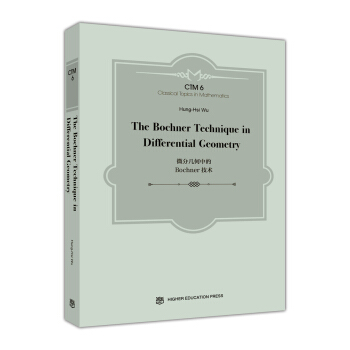
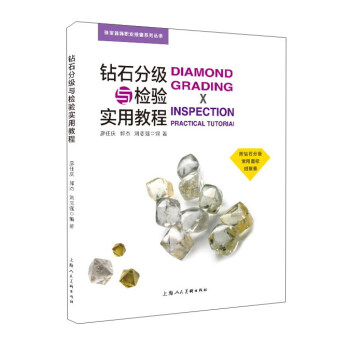


![北方民族大学文库:阿拉伯国家概况 [Overview of Arabia Countries] pdf epub mobi 电子书 下载](https://pic.tinynews.org/12246912/59f30c12N9bb1a741.jpg)
![环境公共治理:欧盟经验与中国实践 [Environmental Governance:EU's Experience and China's Practice] pdf epub mobi 电子书 下载](https://pic.tinynews.org/12246913/5a339571N4f077a77.jpg)
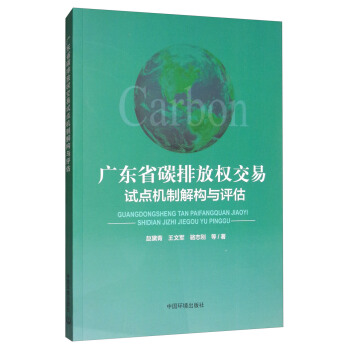

![近地表地球物理勘探 [Near Surface Geophysical Prospecting] pdf epub mobi 电子书 下载](https://pic.tinynews.org/12246965/5a339553N2caa622f.jpg)
![美国环境政策研究(二) [Study on the Environmental Policies in the U.S.] pdf epub mobi 电子书 下载](https://pic.tinynews.org/12246967/5a339572N0bee3351.jpg)
